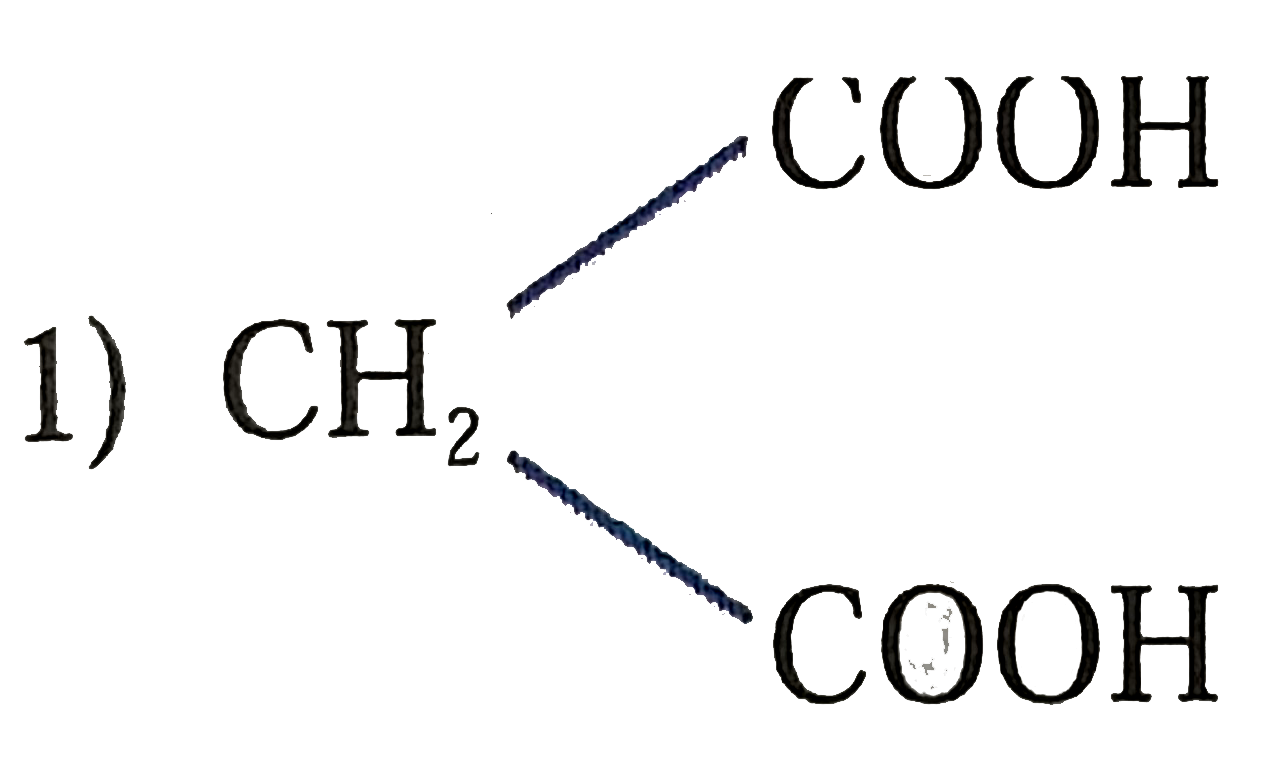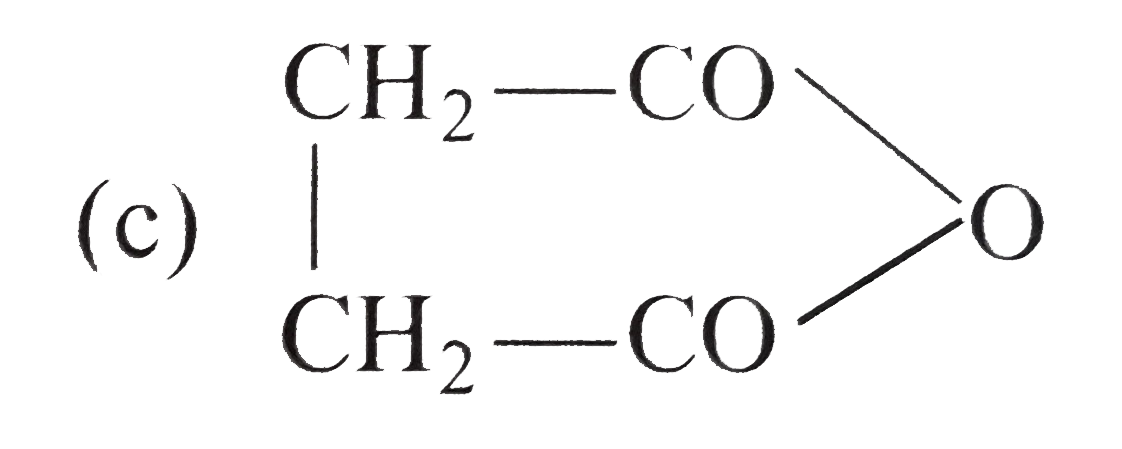Carboxylic acids having at least one α-hydrogen react with Cl2 or Br2 in the presence of phosphorous to give α-halo acids. The reaction is known as Hell -volhar-Zelinsky reaction (HVZ reaction).
R−CH2−COOHP/Br2−−−→ΔR−CH(Br)COOH
The HVZ reaction is limited to the formation of α-chloro and α-bromo acids and it is sometimes backward to carry out. the reagents (X2 and P) are noxious and the reaction time is often long and the conditions of reaction are harsh.
CH3−COOHBr2/P−−−→(A)NaCN−−−→(B)HOH/H+−−−−−−→(C)
The product (C) will be




The correct Answer is:1
Presence of α-hydrogen atoms
Topper's Solved these Questions
Similar Questions
Carboxylic acids having atleast one α-hydrogen react with Cl2orBr2 in the presence of phosphorus ( or a phosphorus halide) to give α-halo acids. This reaction is known as Hell-Volhard-Zelinsky reaction (HVZ reaction),
R−CH2COOHP/Br2−−−→ΔR−Br∣CH−COOH
The HVZ reaction is limited to the formation of α-chloro and a-bromo acids and it is sometimes awkward to carry out. The reagents ( X2 and P) are noxious and the reaction time is often long and the conditions of reaction are harsh.
CH3CH2COOHRedP+Br2−−−−−−→(A)alc.KOHB. The product (B) is :
View SolutionCarboxylic acids having atleast one α-hydrogen react with Cl2orBr2 in the presence of phosphorus ( or a phosphorus halide) to give α-halo acids. This reaction is known as Hell-Volhard-Zelinsky reaction (HVZ reaction),
R−CH2COOHP/Br2−−−→ΔR−Br∣CH−COOH
The HVZ reaction is limited to the formation of α-chloro and a-bromo acids and it is sometimes awkward to carry out. The reagents ( X2 and P) are noxious and the reaction time is often long and the conditions of reaction are harsh.
R−CH2−CH2−OH→R−CH2−CH2−COOH
In above conversion, the reactant (A) follows the sequence of reactions with three reagents
View Solution
Knowledge Check
Carboxylic acids having at least one α-hydrogen react with Cl2 or Br2 in the presence of phosphorous to give α-halo acids. The reaction is known as Hell -volhar-Zelinsky reaction (HVZ reaction).
R−CH2−COOHP/Br2−−−→ΔR−CH(Br)COOH
The HVZ reaction is limited to the formation of α-chloro and α-bromo acids and it is sometimes backward to carry out. the reagents (X2 and P) are noxious and the reaction time is often long and the conditions of reaction are harsh.
Which of the following carboxylic acids will not give HVZ reaction ?ACH3−COOHBCH3−CH3∣CH−COOHCCH3−CH2−COOHDCH3−CH3∣C∣CH3−COOHCarboxylic acids having at least one α-hydrogen react with Cl2 or Br2 in the presence of phosphorous to give α-halo acids. The reaction is known as Hell -volhar-Zelinsky reaction (HVZ reaction).
R−CH2−COOHP/Br2−−−→ΔR−CH(Br)COOH
The HVZ reaction is limited to the formation of α-chloro and α-bromo acids and it is sometimes backward to carry out. the reagents (X2 and P) are noxious and the reaction time is often long and the conditions of reaction are harsh.
Which of the following will be obtained when acetic acid is subjected to HVZ reaction ?ABrCH2COOHBBr−Br∣C∣Br−COOHCBr−Br∣C∣Br−COOHDAll of theseCarboxylic acids having atleast one α-hydrogen react with Cl2orBr2 in the presence of phosphorus ( or a phosphorus halide) to give α-halo acids. This reaction is known as Hell-Volhard-Zelinsky reaction (HVZ reaction),
R−CH2COOHP/Br2−−−→ΔR−Br∣CH−COOH
The HVZ reaction is limited to the formation of α-chloro and a-bromo acids and it is sometimes awkward to carry out. The reagents ( X2 and P) are noxious and the reaction time is often long and the conditions of reaction are harsh.
CH3COOHBr2/RedP−−−−−−→(A)NaCN−−−→(B)HOH/H+−−−−−−→(C)
The product (C) will be:A B
B C
C D
D
Carboxylic acids having at least one α-hydrogen react with Cl2 or Br2 in the presnence of red phosphorus to give α-halo acids. The reaction is known as H.V.Z. reaction. The HVZ reaction is limited to the formation of α-chloro acid and α-bromo acid and it is sometimes difficult to carry out the reaction. Answer the following questions :
Which of the following carboxylic acids will not give HVZ reaction ?
View SolutionCH3COOHP/Br2−−−→CH2BrCOOH. The reaction is called:
View SolutionPredict the product 'C' in the following chain of the reactions:
CH3CH2COOHRedP/Br2−−−−−−→(A)KCN−−→(B)HOH/H+−−−−−−→Δ(C)
View SolutionFind out product D in the following sequence of reaction .CH3−CH2−COOH+Na→ABrr/Red.P.−−−−−−−→BNANO2−−−−→CH2O−−→D
View SolutionConsider the following reaction
H2C=CH−CH2CH2−OHBr2/CCl4−−−−−→ADil.KOH−−−−−→25∘CB
The product B is:
View Solution

